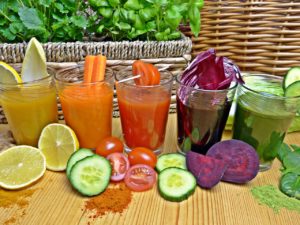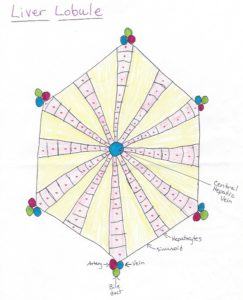Liver Lesson #3: Storage [Show Notes]

Recap
Digestion – bile breaks down fat to be absorbed by intestines
Metabolism – breaking down food into useful pieces
Your liver helps you store those energy sources until you need them – like times when you’re not eating.
Your body does lots of processes for you while you’re sleeping.
Storage
Glucose is a main source of energy for your body.
Insulin tells your cells to let glucose in the door so it can be used immediately. It also tells the liver to put extra glucose in long chains called Glycogen to store for future use.
Another energy source is fat or fatty acids. When the liver doesn’t have enough space for fat, it sends it to other areas of the body.
Certain vitamins (A, D, E, K) like to hang out in fat more than water, so it goes with the fat wherever it goes.
The liver stores Vitamin B12. B12 is usually promoted for energy boosting. A vitamin B12 deficiency can lead to a certain type of anemia (pernicious anemia). This means not enough red blood cells are being made, thus not enough oxygen is being delivered to all the parts of your body. Therefore your body doesn’t have the resources to utilize and create energy. End result: you feel tired.
Iron and copper are also stored by your liver until you need them. Low iron is another culprit of anemia.
Interesting fact: This is why liver tastes more metallic than other red meats.
Connect with me
Support us on Patreon
*NEW* Join the Pharmacist Answers Podcast Community on Facebook
Subscribe: iTunes, Stitcher, GooglePlay, TuneIn Radio

